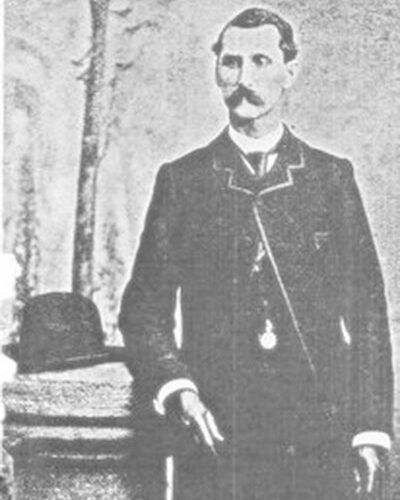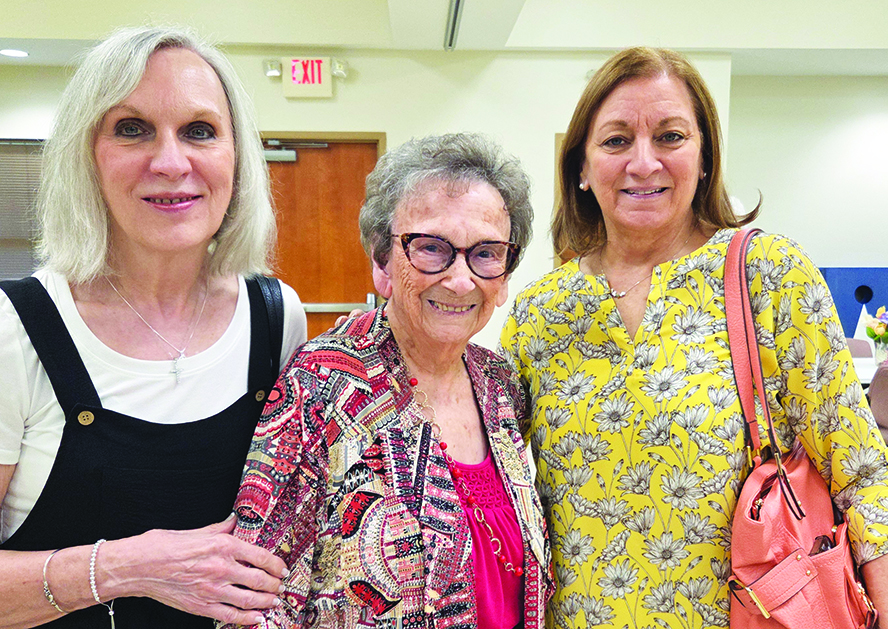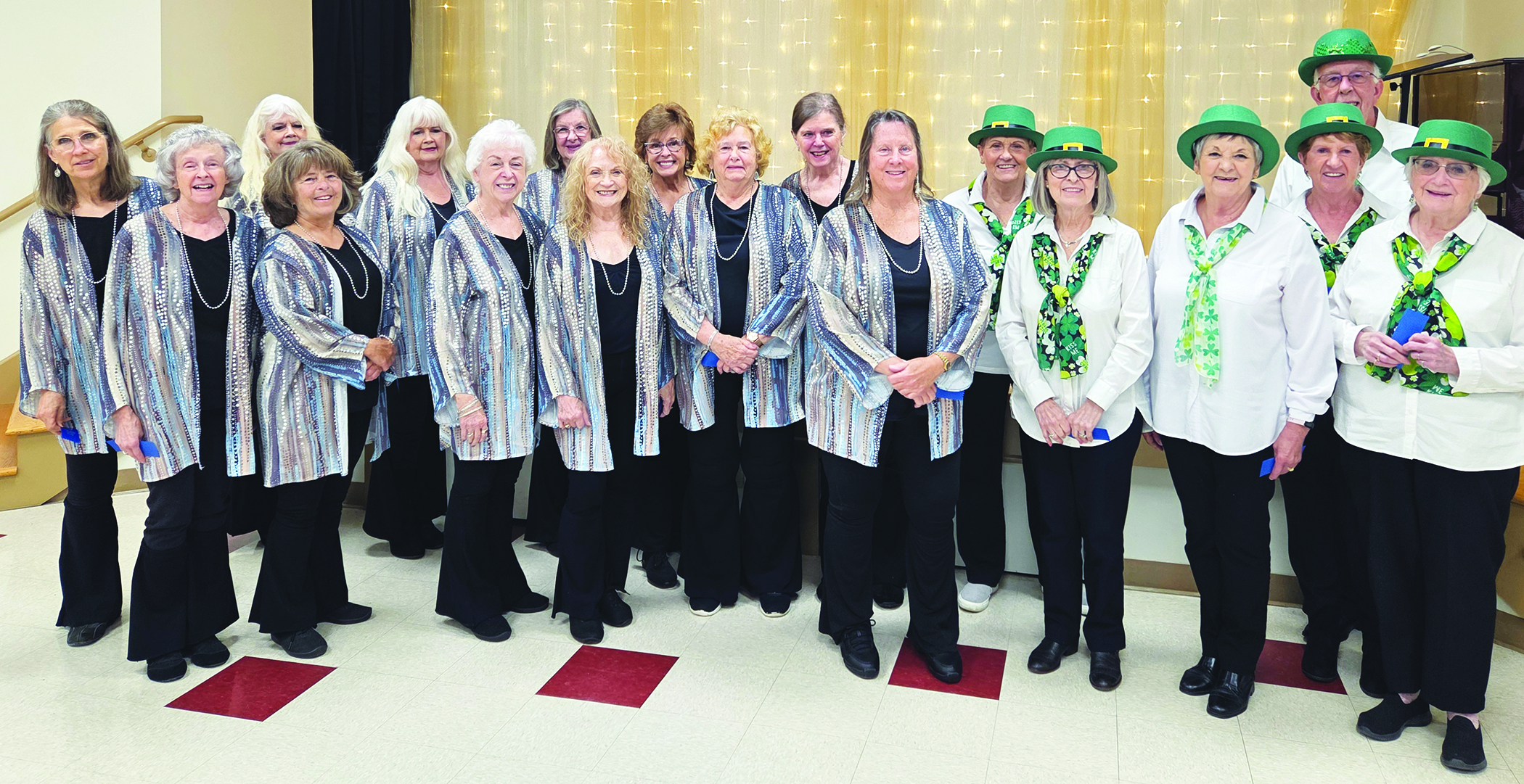The Literary Corner: Renegade Writer’s Guild
Published 11:36 am Tuesday, January 7, 2025

- John Daniel Hodges
|
Getting your Trinity Audio player ready...
|
Col. J.D. Hodges
By Linda H. Barnette
One of the most interesting people that I have read about in Davie County was Col. or Prof. J. D. Hodges. Born on Oct. 11, 1844, he went on to become one of our county’s most outstanding citizens. During the Civil War, he was a Confederate soldier who served bravely under J.E B. Stuart. He was captured, sent to Point Lookout on the Maryland Shore, and eventually released and walked all the way back home. One source said that when he appeared at his home on a hot June day in 1865, it was as though he had risen from the dead.
Later, upon hearing a speech by Braxton Craven, the founder of Trinity College, now Duke University, Hodges decided to pursue his dream of education. After receiving his degree, Hodges set out to make a name for himself in the field of education. So for several years he taught languages at Trinity. An earlier tour of the Continent made him proficient in several languages, enabling him to teach Greek, French, and German.
After this experience, Hodges spent the rest of his life in education, much of it in Davie County. He founded a boarding school, Augusta Seminary, just down the road from Concord Methodist Church on Cherry Hill Road. Many students studied there over the years. Later he was also the superintendent of schools in Davie County.
Born at Oak Hill Plantation, he spent most of his life in the same general area of Davie County. His father was John Wells Hodges, and his mother was Mary Magdalene Click Hodges. He eventually got around to marriage when he was 52 years old. His wife, Sallie Augusta Thompson, was much younger, and they had 6 children.
His academy, which I remember seeing years ago, is now a private home. He is buried at Concord Methodist Church just across from his school on land given to the Methodist Church by his father. Col. Hodges died on Jan. 4, 1936. The inscription on his gravestone reads as follows:
“In memory of Brigadier General Daniel Hodges of North Carolina Division United Confederate Veterans and Professor at Trinity College. He fought the battles of his beloved Southland under Robert E. Lee and J. E. B Stuart and when he laid down the sword, he fought for seventy years the unending battle of education and enlightenment against the powers of ignorance and untruth.”
To clarify, the title of Brigadier General was given by the North Carolina members of the Confederate survivors group.
My Hartley grandparents lived just a few miles down the road from the Hodges, and my grandmother was a member of the first Home Extension Club in our county. Mama had a pump organ, and she always “invited” me to play hymns when she had ladies visiting her home. I remember meeting Mrs. Hodges, who was very short. As a young teen I was taller than she.
Another interesting fact about Col. Hodges is that when the Wisconsin Historical Society in 1888 exhumed the body of Marshal Ney, one of Napoleon’s generals who supposedly escaped the firing squad in France and came to America and taught school in Davie, Iredell, and Rowan counties. Prof. Hodges was a witness to the marks of identification on Ney’s body, including a silver plate in his skull from a wound in Leipzig. However, history has not supported this finding.
Silent Thief
By: E. Bishop
One of my previous writings was about our senses and how important each one is to our well being. At the time, I was experiencing hearing loss but thankfully that has been corrected with aids. As you get older many physical problems can sneak up on you. Some are not so subtle, but some are downright stealthy. Such is the case with glaucoma, sometimes called the “silent thief of sight” because it slowly damages the eyes and can cause irreparable harm before there is any vision loss noticed. With medical information taken from my many visits to Duke Eye Center as well as garnered from the National Eye Institute (NIH), the following is a synopsis of my recent journey in eye care.
It all started with a routine eye exam with no perceived problems. However, after a comprehensive dilated eye exam, a problem with eye pressure was noticed; a referral to Duke Eye Center was in order. I had no obvious symptoms that I was aware of but soon found out that damage was already taking place due to undetected glaucoma of which there are several types.
Glaucoma is a group of diseases that damage the optic nerve, a cable at the back of each eye that connects it to the brain. The NIH estimates that this affects more than 2.7 million people in the United States. There are many forms of the disease, but primary open-angle glaucoma (POAG) is the most common form and the most mysterious. Age is a clear risk factor, along with a family history of the disease, but no single cause has been determined. POAG is the type of glaucoma I have.
Initial treatment began with pressure reducing eye drops, then laser treatment later followed by a trabeculectomy, a surgical procedure to create a new way for fluid to drain from the eye. The surgeon creates a flap in the white part of the eye, called the sclera, which is a new pathway for fluid to drain thereby reducing eye pressure. For me, this was an out-patient procedure which required restrictions for awhile along with continued eye drops and eye pressure monitoring.
Unfortunately, scar tissue formed in the surgical site, the pressure continued to be at unacceptable levels and vision was decreasing to legally blind status due to a growing cataract being present also. In the meantime, I had to be monitored for retinal inflammation as well. The retina cleared up; but another surgery was still necessary.
Cataracts are cloudy areas in the lens of your eye. The lens is behind the colored part of your eye (iris). Its job is to focus light onto the back of your eye. In some people, cataracts prevent light from reaching the back of the eye. This causes vision problems. Cataract surgery helps you see better. It replaces your natural lens, which has become cloudy, with a clear artificial one.
Tube shunt surgery may be needed after medication, laser treatment and trabeculectomy have failed to reduce eye pressure due to glaucoma. This is an implant surgery where a small tube is carefully inserted into the front chamber of the eye, just in front of the iris. Fluid drains through the tube, into the area around the back end of the implant. Fluid collects here and is reabsorbed by the body.
Recently, I had these two procedures (tube/cataract) done during one surgical out-patient visit. That was a long day; but at the same time, I’m so thankful that modern medicine continues to make strides in helping us be healthier. Issues with corneal swelling started creating blurry vision but with patience, I was told this would improve; I should have near normal vision in the future. I’m waiting for that day! Of course, eye pressure monitoring is still necessary.
The reason for sharing this journey is to bring awareness to the silent thief that glaucoma is. January is National Glaucoma Awareness Month. Learn about it, spread awareness, share information, schedule a dilated comprehensive eye exam. Sight is one of those precious senses to be grateful for; take care of it.





